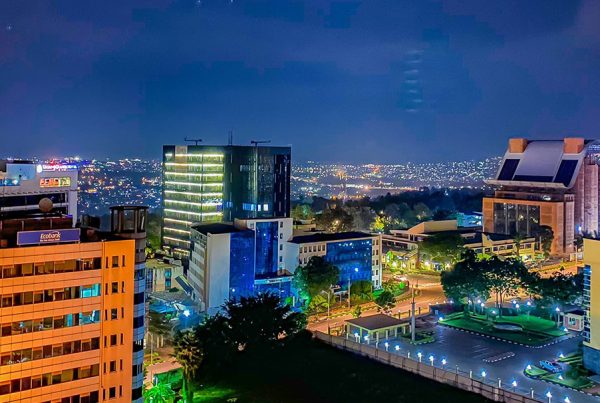Nairobi is betting big on a new model of city-building, one that fuses Kigali’s structured urbanism with private capital, data-driven governance, and green investment. In what appears to be a quiet pivot from postcolonial chaos to continental coordination, Governor Johnson Sakaja is placing Nairobi on a collision course with the future via infrastructure bonds, PPPs, and a people-first agenda.
The Kenyan capital, long plagued by governance setbacks and patchy infrastructure, is now looking to reverse decades of inertia by borrowing Rwanda’s approach to order and discipline. “What makes Kigali extraordinary isn’t its size, it’s the clarity of vision,” Sakaja said after a series of meetings with Rwandan officials, including President Paul Kagame and the RDB leadership. “I’ve seen the BK Arena and the Zaria Court, these aren’t vanity projects. They are strategic tools of economic mobilization, civic pride, and social capital.”
Kigali’s playbook is grounded in public-private partnerships, digitization, and an obsessive commitment to urban hygiene and civic order. Nairobi is embracing this logic at scale. The county is currently rolling out 120,000 affordable housing units, half of them county-led, without relying on direct public funding. Land is being unlocked as equity, while private sector players handle capital and construction.
The financing approach is being expanded to climate. Africa holds over 60 percent of the world’s solar potential and carbon sinks but receives just 3 percent of global climate funding. Sakaja’s Nairobi is targeting this asymmetry by converting daily governance into bankable green projects, solarizing markets, launching green kitchens that feed 316,000 children, and introducing air quality monitors tied to carbon credits.
“Climate action in Africa must translate into green jobs,” he said. “It’s not about theory, it’s about jobs for our youth, dignity for our mothers in markets, and resilience in our infrastructure.”
Meanwhile, Nairobi is cutting red tape. Six business licenses have been collapsed into one, accessible online from anywhere in the world. Smart infrastructure from traffic cameras to fiber networks, is being expanded as part of a broader smart city plan anchored in IoT and AI.
“We’re investing in data, not guesswork,” Sakaja said. “Urban infrastructure in a modern city must think smart.”
The city’s revenue has risen from KES 10 billion to KES 13.8 billion annually under Sakaja’s tenure, the highest in its history, demonstrating that early reform momentum is beginning to show results. But more than money, the governor is after legitimacy.
“There is no instant coffee in leadership,” he said. “It’s slow. But it’s sure. And trust is returning.”
As Sakaja pushes to position Nairobi as a financial and innovation hub, he’s also exporting East African unity. “When you have a bird that is flying, it doesn’t ask which wing is more important,” he said. “East Africa must fly together.”





